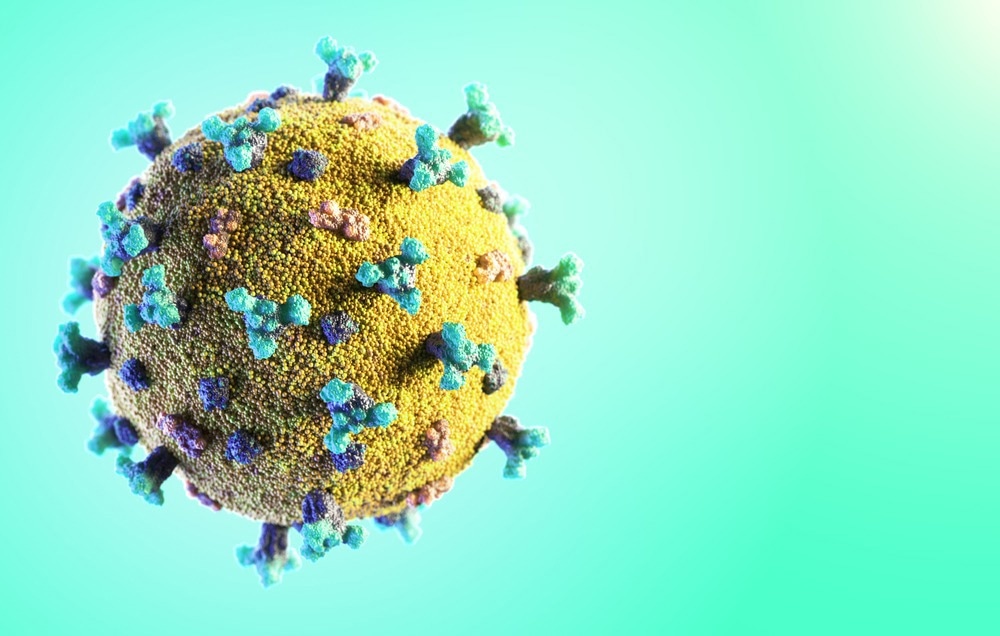In a recent study posted to the medRxiv* preprint server, researchers demonstrated the presence of infectious severe acute respiratory syndrome coronavirus 2 (SARS-CoV-2) in samples from the hospital rooms of SARS-CoV-2-infected patients.
 Study: Detection of infectious SARS-CoV-2 in frozen aerosol samples collected from hospital rooms of patients with COVID-19. Image Credit: creativeneko/Shutterstock
Study: Detection of infectious SARS-CoV-2 in frozen aerosol samples collected from hospital rooms of patients with COVID-19. Image Credit: creativeneko/Shutterstock

 *Important notice: medRxiv publishes preliminary scientific reports that are not peer-reviewed and, therefore, should not be regarded as conclusive, guide clinical practice/health-related behavior, or treated as established information.
*Important notice: medRxiv publishes preliminary scientific reports that are not peer-reviewed and, therefore, should not be regarded as conclusive, guide clinical practice/health-related behavior, or treated as established information.
Background
While coronavirus disease 2019 (COVID-19) vaccines have significantly helped curb the transmission of SARS-CoV-2, surveillance methods facilitating the assessment of SARS-CoV-2 on community levels continue to be crucial for informing decisions regarding strategies for preventing COVID-19 spread.
Understanding the rate of virus emission and subsequent SARS-CoV-2 transmission via air in particles of varying sizes, commonly referred to as aerosols and droplets, need well-defined methodologies for monitoring indoor air. This is necessary for a better understanding of viral resistance against environmental stress, for providing information on the hazards of acquisition at a community level as well as occupational situations, and for evaluating virus mitigation strategies in indoor environments.
About the study
In the present study, researchers assessed the ability to separate replicating SARS-CoV-2 detected in environmental aerosol samples in hospitals following freezing and long-term storage of air samples.
The team collected air samples in acute care hospital rooms housed in a unit dedicated to the care of COVID-19 patients in the province of Quebec, Canada between 27 October 2020 and 6 November 2020. There were two classes of sampling equipment employed. Firstly, 37mm cassettes equipped with 0.8 µm polycarbonate filters were positioned 1.5 meters to two meters away from the head of the patient and faced down at the head of the beds. Secondly, a Series 110A Liquid Spot Sampler was placed within two to three meters of the patient's bed.
Air samples previously frozen in viral transport media (VTM) were utilized to inoculate VERO E6 cells for two rounds of infection. As a control, either β-propiolactone (BPL) inactivated or live SARS-CoV-2/SB2 isolates were employed. Cells, along with their supernatants, were obtained to evaluate viral replication parameters. The cytopathogenic effects (CPE) were subsequently evaluated. The virus titer estimated in the supernatants was evaluated using the median tissue culture infectious dosage.
The anti-SAR-CoV-2 nucleocapsid (N) and anti-spike (S) antibodies were used to detect SARS-CoV-2 proteins in cells by immunoblot analysis. Ribonucleic acid (RNA) extracted from cell supernatants, or air samples was amplified using reverse transcription-quantitative polymerase chain reaction (RT-qPCR) for SARS-CoV-2 N or open-reading frame (ORF)-1b.
Results
Using cassettes or Spot Sampler devices, 30 samples were obtained in eight rooms that housed COVID-19 patients. The period of the sampling ranged between 4.75 hours and seven hours. As verified by RT-qPCR, nine out of 22 cassettes and two out of eight samples of the Spot Sampler contained SARS-CoV-2 RNA, with airborne quantities ranging between 129 and 2,056 genomes equivalent per cubic meter of air.
Three days post-infection, the replicating SARS-CoV-2 virus caused notable symptoms of CPE. Additionally, examination of whole cell extracts (WCE) with immunoblotting enabled the detection of SARS-CoV-2 S and N proteins, while the supernatant demonstrated high amounts of de novo virions.
Notably, neither of these indicators was positive two hours after inoculation with a replication-competent virus or when BPL-inactivated SARS-CoV-2 was used as the inoculant. These findings revealed that only viruses that replicated actively cause CPE, display cellular expression of N and S proteins, and result in detectable de novo viral generation.
Four air samples from the same hospital room with the highest RNA contents were chosen to assess the existence of a virus capable of reproducing in the cell culture. According to the RT-qPCR assessment, the level of SARS-CoV-2 ORF1b copies in 200L of examined aerosol samples ranged between 62.70 and 259.05 copies. Notably, patient characteristics that may impact SARS-CoV-2 aerosolization included acute COVID-19 pneumonia, acute cough necessitating oral codeine administration, and dyspnea necessitating the intermittent provision of oxygen through a nasal cannula.
Spot Sampler found detectable CPE in one of the samples on day three following the first and second inoculations following infection with 150 pfu of SARS-CoV-2/SB2 strain. On day three, after the first and second infections, cellular S and N were found in WCE from cells injected with that sample, indicating the existence of infectious SARS-CoV-2.
Additionally, the virion titers in that sample's supernatant after two infection cycles was 6.32 x 107 median tissue culture infectious dose (TCID50)/mL, which was 5.67-fold lower than that found in the following infection with 150pfu of SARS-CoV-2/SB2 strain. None of the samples obtained using the cassette exhibited detectable CPE, production of viral proteins, or de novo virions.
Overall, the study findings demonstrated that 14 months after sample collection, replicating SARS-CoV-2 was found in one of four air samples obtained in the hospital rooms of COVID-19 patients.

 *Important notice: medRxiv publishes preliminary scientific reports that are not peer-reviewed and, therefore, should not be regarded as conclusive, guide clinical practice/health-related behavior, or treated as established information.
*Important notice: medRxiv publishes preliminary scientific reports that are not peer-reviewed and, therefore, should not be regarded as conclusive, guide clinical practice/health-related behavior, or treated as established information.